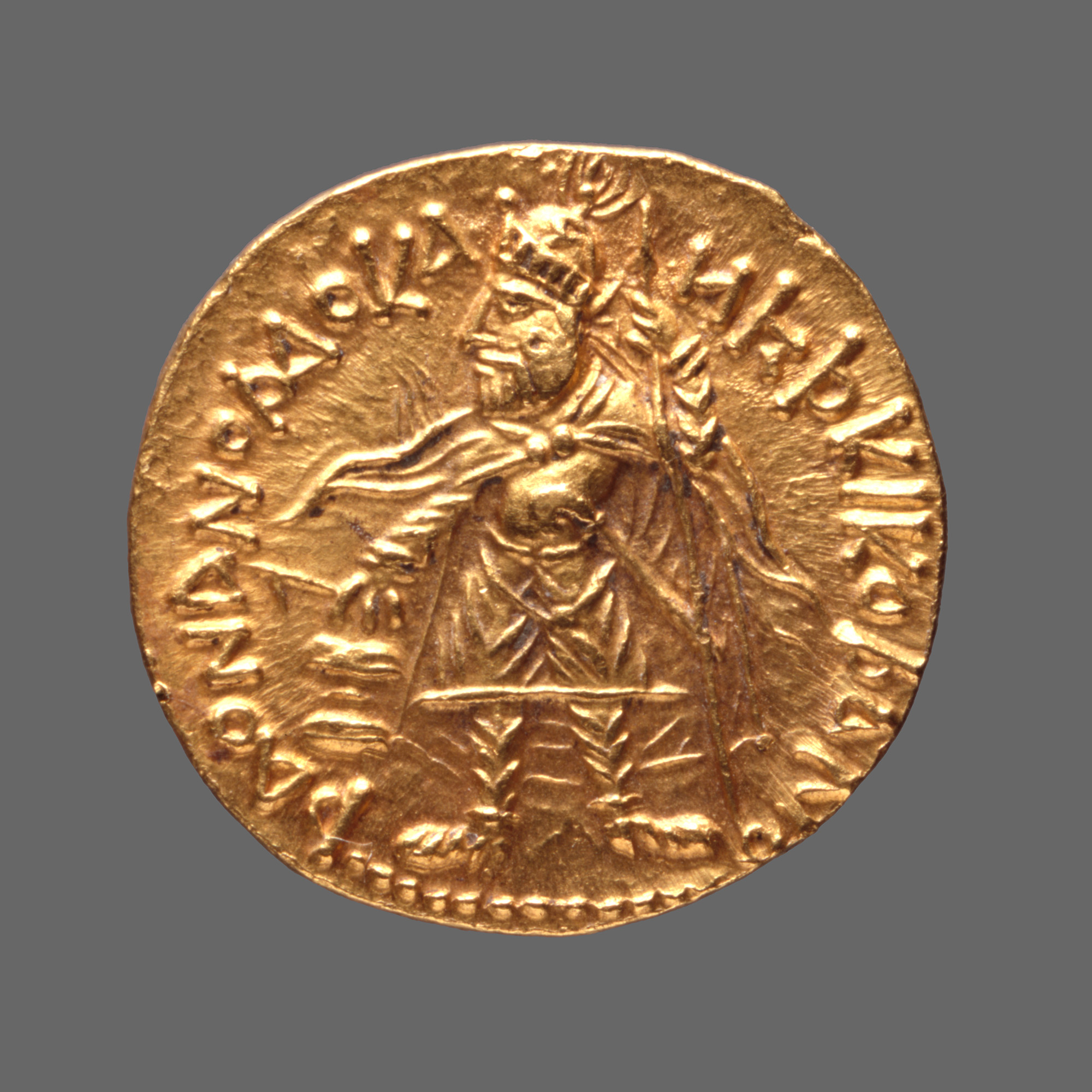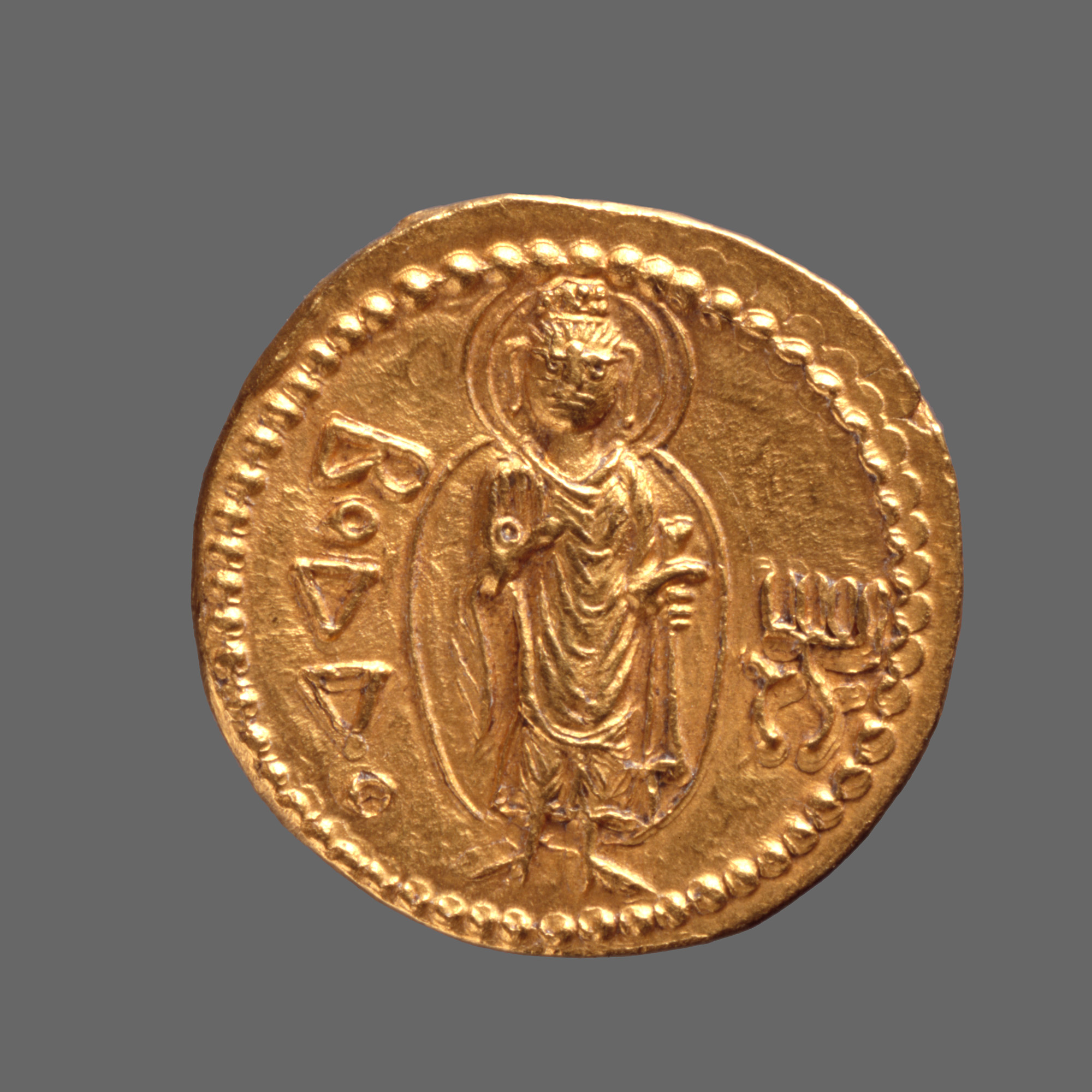Kanishka I Gold Coin(Ancient Greek unit of gold coins)
- Central Asia
- Afghanistan or Pakistan
- The early 2nd century AD
- The Kushan Dynasty
- gold
- 7.97g
Kushan empire ruled the north-west region of India, and its 4th King Kanishka (around 127-150) was heavily devoted to Buddhism. Buddhist art flourished mainly around Gandhara. Kushan empire casted high quality gold coins, and actively engaged in trade with the Roman empire in the Golden Age and Later Han dynasty. On the front of this coin is a text in Greek which reads "The king of kings, Kanishka", and an engraving of the King with his hands over the worship fire. On the back of the coin is a Buddha (inscribed ΒΟΔΔΟ), although it is common to have an image of the gods. The Buddha has a big nimbus. With the right hand, it forms the mudra of semui-in with the palm facing forward, and with the left hand it holds the edge of the garment. This image is similar to the Buddha standing statues that were created in Gandhara in that time. There are few golden coins in the world which are similar in type.


